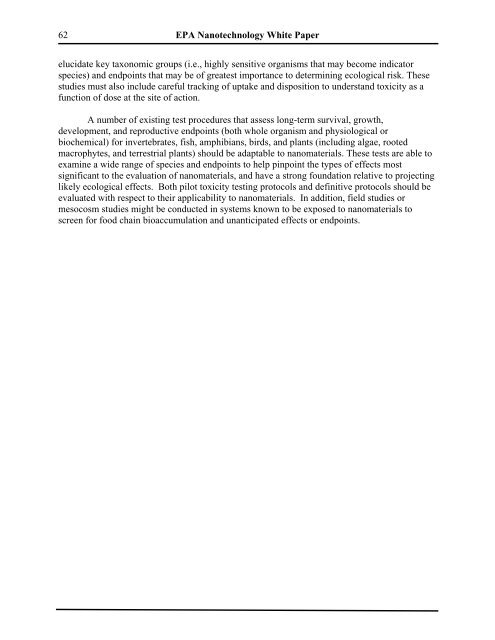Nanotechnology White Paper - US Environmental Protection Agency
Nanotechnology White Paper - US Environmental Protection Agency
Nanotechnology White Paper - US Environmental Protection Agency
Create successful ePaper yourself
Turn your PDF publications into a flip-book with our unique Google optimized e-Paper software.
62 EPA <strong>Nanotechnology</strong> <strong>White</strong> <strong>Paper</strong><br />
elucidate key taxonomic groups (i.e., highly sensitive organisms that may become indicator<br />
species) and endpoints that may be of greatest importance to determining ecological risk. These<br />
studies must also include careful tracking of uptake and disposition to understand toxicity as a<br />
function of dose at the site of action.<br />
A number of existing test procedures that assess long-term survival, growth,<br />
development, and reproductive endpoints (both whole organism and physiological or<br />
biochemical) for invertebrates, fish, amphibians, birds, and plants (including algae, rooted<br />
macrophytes, and terrestrial plants) should be adaptable to nanomaterials. These tests are able to<br />
examine a wide range of species and endpoints to help pinpoint the types of effects most<br />
significant to the evaluation of nanomaterials, and have a strong foundation relative to projecting<br />
likely ecological effects. Both pilot toxicity testing protocols and definitive protocols should be<br />
evaluated with respect to their applicability to nanomaterials. In addition, field studies or<br />
mesocosm studies might be conducted in systems known to be exposed to nanomaterials to<br />
screen for food chain bioaccumulation and unanticipated effects or endpoints.

















